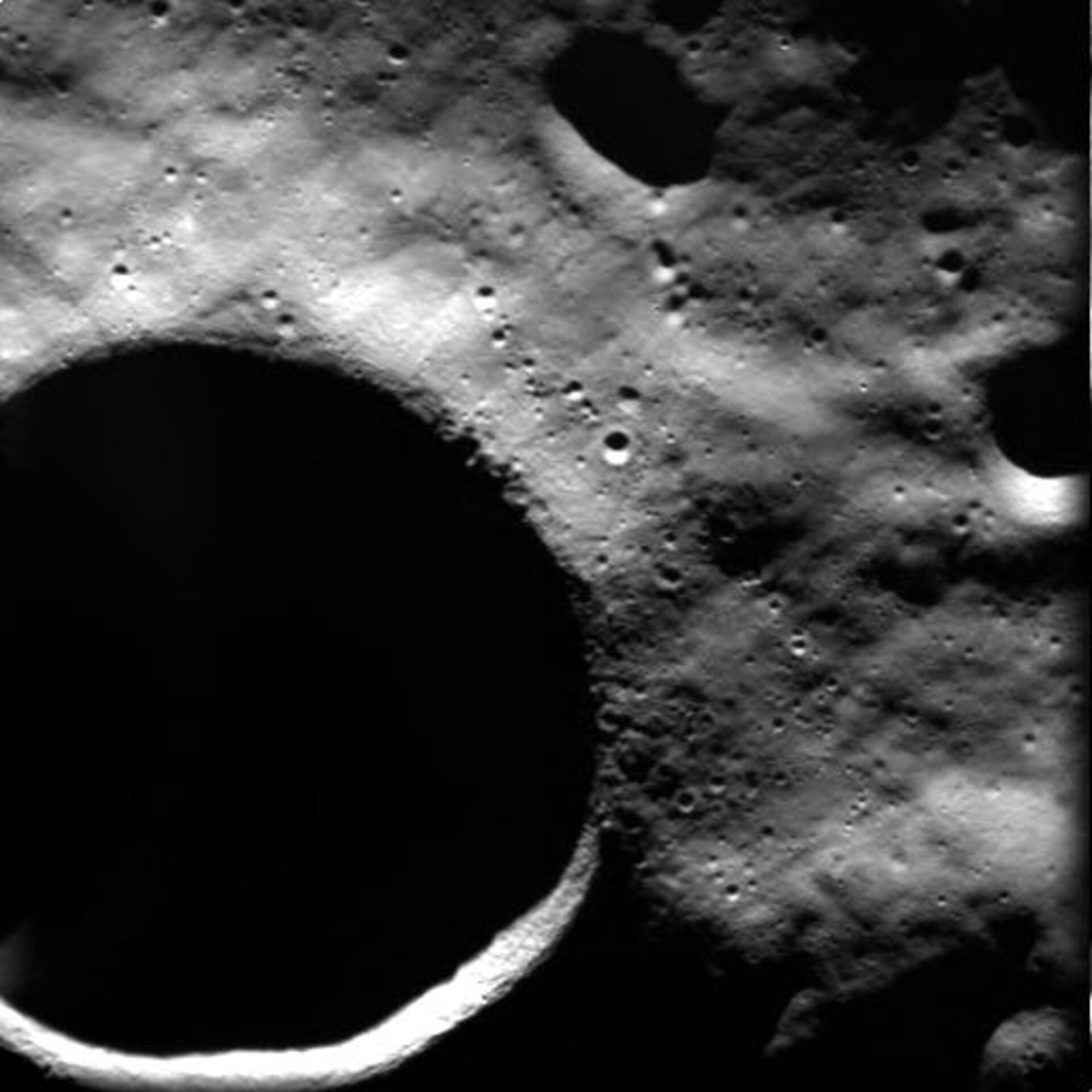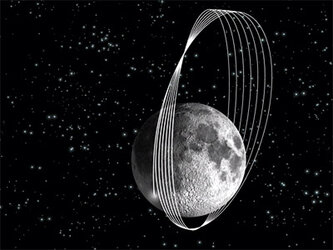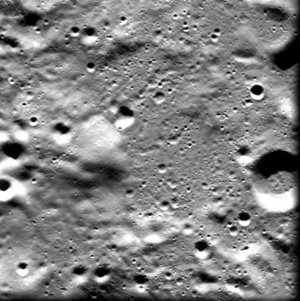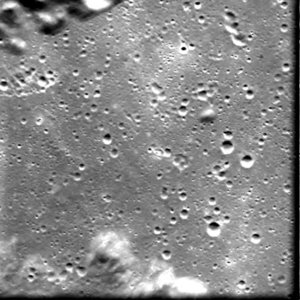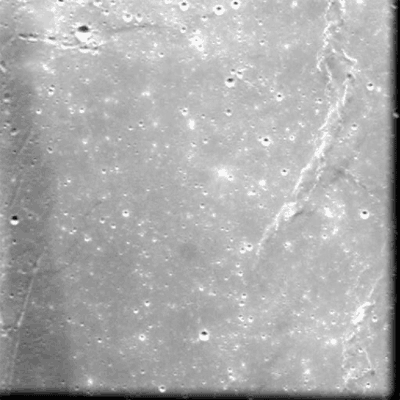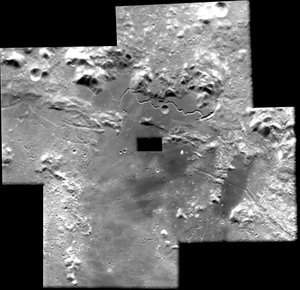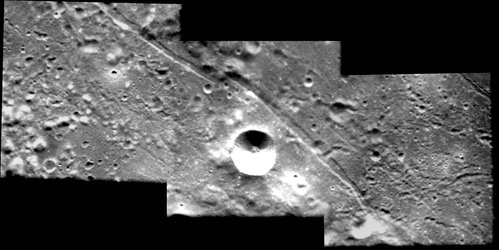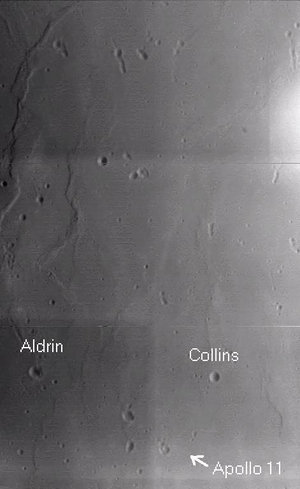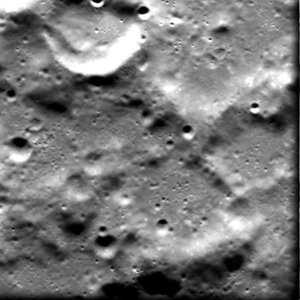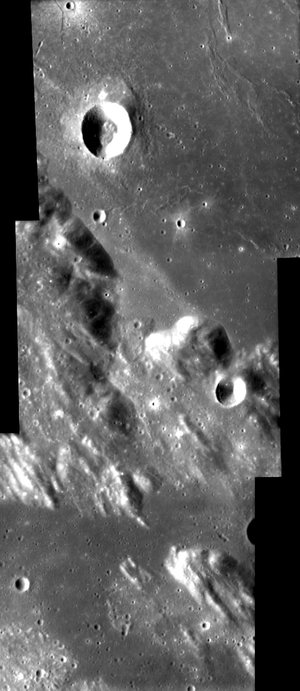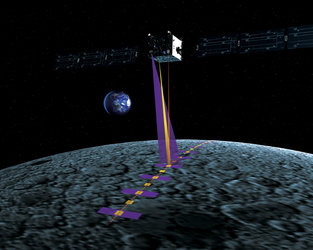Shackleton crater: SMART-1’s search for light, shadow and ice at lunar South Pole
This image, taken by the advanced Moon Imaging Experiment (AMIE) on board ESA's SMART-1 spacecraft, shows crater Shackleton on the Moon.
AMIE obtained this image on 13 January 2006 - close to the time of lunar southern Summer - from a distance of 646 kilometres over the surface and with a ground resolution of 60 metres per pixel.
Shackleton crater lies at the lunar South Pole, at 89.54° South latitude and 0° East longitude, and has a diameter of 19 kilometres.
SMART-1 monitored this area almost every orbit. This will allow to produce very high resolution maps of the area as well as illumination maps. The long shadows that surround the crater make it very hard to observe. The analysis of the data obtained allowed a very detailed map of its rim, surrounding ejectas and craters.
SMART-1 also made long repeated exposures to see inside the shadowed areas. The purpose was detecting the very weak reflected light from the crater rims, and therefore study the surface reflection properties (albedo) and its spectral variations (mineralogical composition). These properties could reveal patchy ice surface layers inside the crater.
On the 2-kilometre wide inner edge of the crater ridge, at times barely visible from Earth, astronomers using ground radio-telescopes have recently reported they were not able to detect a distinctive signature of thick deposits of ice in the area. Earlier measurements by NASA's Lunar Prospector reported of hydrogen enhancement over large shadowed areas.
"We still do not know if this hydrogen is due to enhanced trapping of solar wind, or to the water ice brought on the Moon by the bombardment of comets and asteroids," says Bernard Foing, ESA's SMART-1 Project Scientist. "These bodies may have deposited on the Moon patchy layers of ice filling about 1.5 percent of the areas in permanent shadow, down to one metre below the surface."
"We need to analyse all remote sensing data sets consistently. Future lander and rover missions to the Moon will help in the search and characterisation of lunar polar ice, both on the surface and below the subsurface," Foing continues. "In any case, one day we may even be able to simply combine the implanted hydrogen and the oxygen extracted from lunar rocks to produce clean water, like we do in laboratory experiments on Earth.”
The crater is named after Ernest Shackleton (1874-1922), an explorer famous for his Antartic expeditions.
Note to editors
Launched in September 2003, SMART-1 ended its mission through lunar impact on 3 September 2006. The huge data sets it provided are and will be analysed by lunar and planetary scientists, and provide a very important legacy in the history of lunar exploration.
For more information
Bernard H. Foing, ESA SMART-1 Project Scientist
Email: bernard.foing @ esa.int
Jean-Luc Josset, AMIE Principal Investigator, SPACE-X Space Exploration Institute
Email: jean-luc.josset @ space-x.ch


